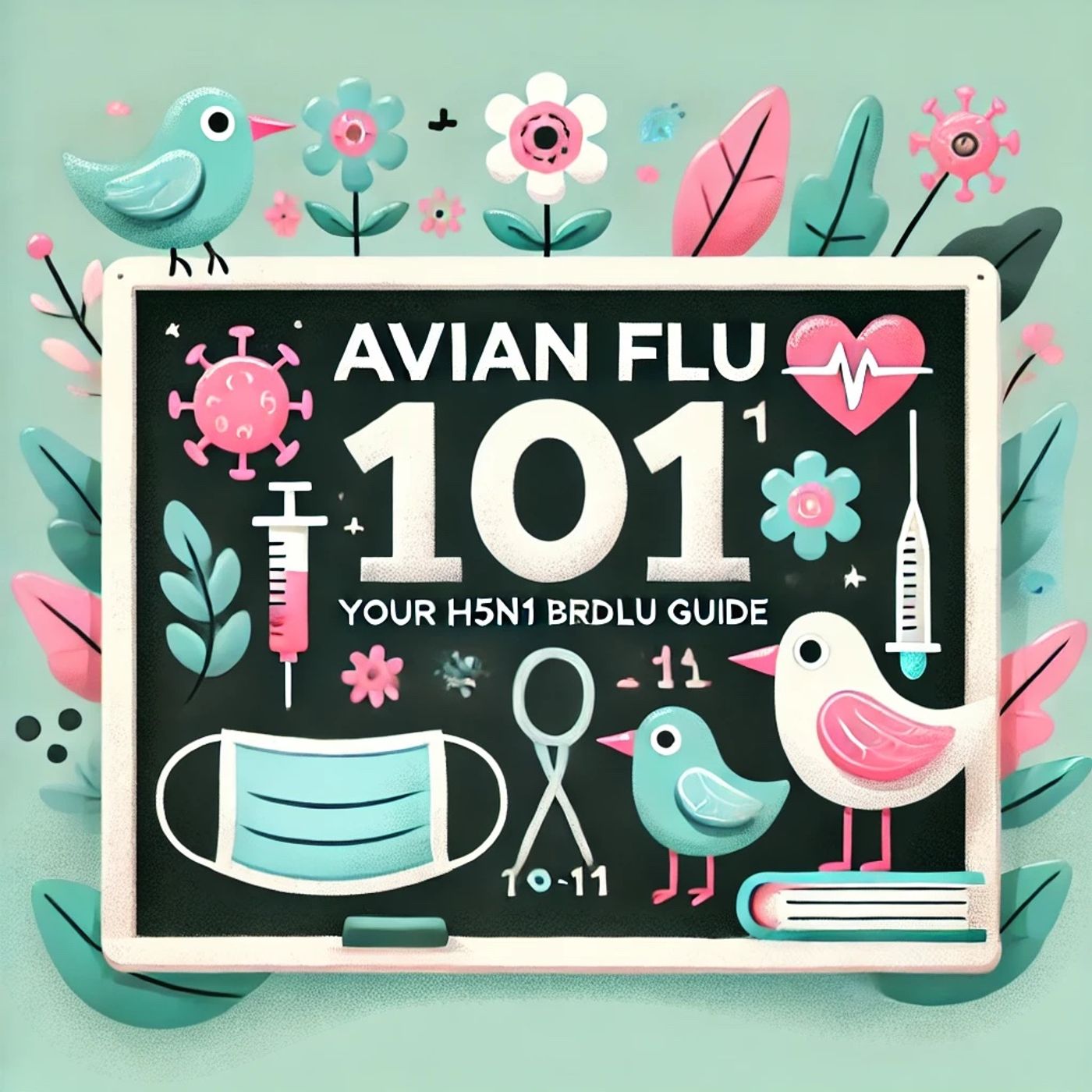Listen "H5N1 Bird Flu Explained: Key Insights on Transmission, Risks, and What You Need to Know About Avian Influenza"
Episode Synopsis
Hello, listeners, and welcome to today's podcast: Avian Flu 101, Your H5N1 Bird Flu Guide. Whether you're a complete newbie or just curious about what H5N1 is all about, you're in the right place.Let's begin with some basics about virology, the study of viruses. Picture viruses as tiny invaders that hijack the cells in their host—be it birds, humans, or other animals—to reproduce and spread. The avian influenza virus, known as H5N1, primarily resides in birds. However, it becomes a cause for concern when it jumps from birds to humans.Historically, bird flu outbreaks like the one in 1997 in Hong Kong taught us valuable lessons. Then, H5N1 infected 18 individuals and resulted in six deaths. This alarming outcome pushed scientists to advance our understanding and prepare more robust responses. We learned that early detection, rapid response, and international cooperation are key to controlling outbreaks.When you hear the term "avian influenza," think bird flu. The "H" and "N" in H5N1 stand for hemagglutinin and neuraminidase, proteins on the virus’s surface that help it invade host cells and spread. It's like a key fitting into a lock to open a door.Now, if you're wondering how bird flu can jump from birds to humans, think of the process like a game of leapfrog. The virus typically needs a direct route—via close contact with infected birds. Imagine the virus using a springboard to leap from a bird to a human. This jump is less common than flu's usual routes of infection, which keeps its sp controlled, albeit more deadly in some cases.Comparing bird flu to seasonal influenza and COVID-19 can provide perspective. Season flu viruses constantly circulate and mutate, leading to regular outbreaks and the need for vaccines that change yearly. COVID-19, caused by a coronavirus, underscored how rapidly viruses can spread and disrupt our lives. Bird flu, by contrast, is primarily of concern due to its potential to cause severe illness and its limited but dangerous human infections.Let's wrap up with a common Q&A. First, can humans catch bird flu easily? No, human cases are rare, usually involving close contact with infected birds or surfaces. Is there a bird flu vaccine? Not for widespread use, but vaccines are being researched and stockpiled for outbreaks. Can cooking poultry spread bird flu? The virus is destroyed by proper cooking, so well-cooked poultry is safe.That's all for today's primer on avian flu. Remember, understanding these viruses helps us better prepare for future outbreaks and manage any risks that may come our way. Thank you for listening to Avian Flu 101. Stay informed and stay safe.This content was created in partnership and with the help of Artificial Intelligence AI
More episodes of the podcast Avian Flu 101: Your H5N1 Bird Flu Guide
H5N1 Bird Flu Explained: What You Need to Know About Transmission, Risks, and Prevention in 2025
17/11/2025
H5N1 Bird Flu Guide: What You Need to Know About Avian Influenza Symptoms, Transmission, and Safety
14/11/2025
H5N1 Bird Flu Explained: What You Need to Know About Transmission, Symptoms, and Current Risk Levels
12/11/2025
H5N1 Bird Flu Explained: What You Need to Know About Avian Influenza and Human Health Risks
10/11/2025
H5N1 Bird Flu Explained: What You Need to Know About Avian Influenza and Human Risk in 2024
08/11/2025
 ZARZA We are Zarza, the prestigious firm behind major projects in information technology.
ZARZA We are Zarza, the prestigious firm behind major projects in information technology.
